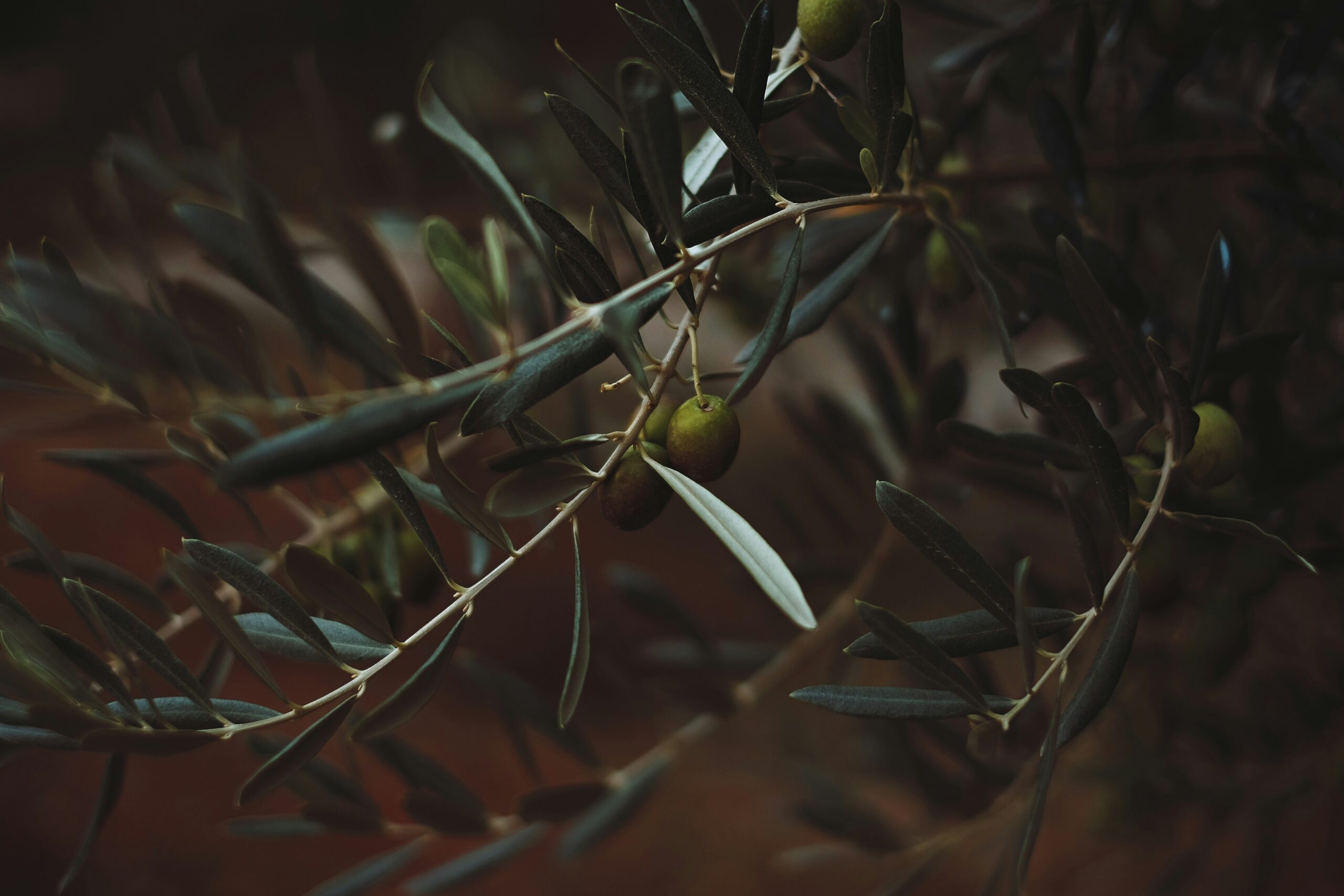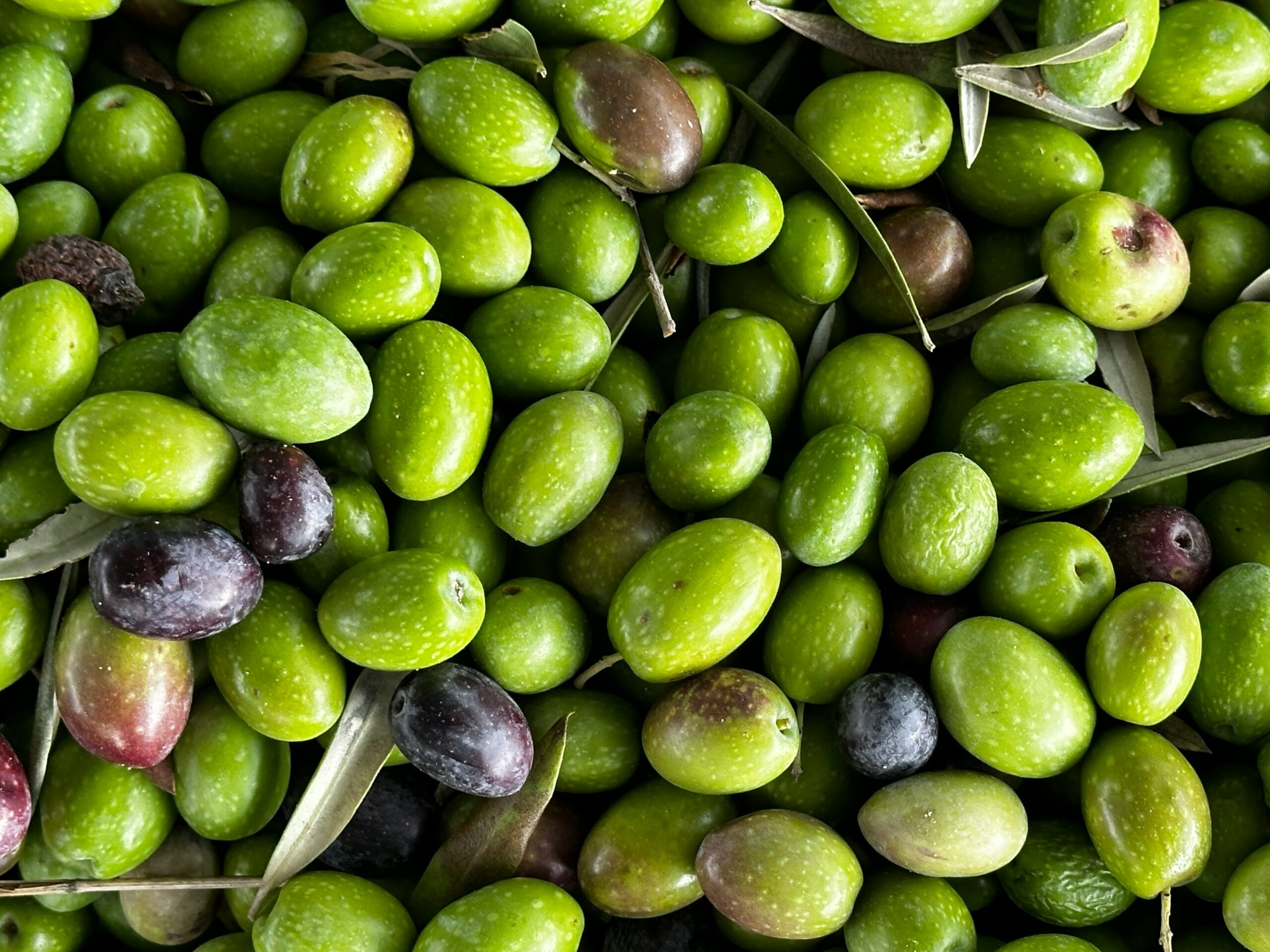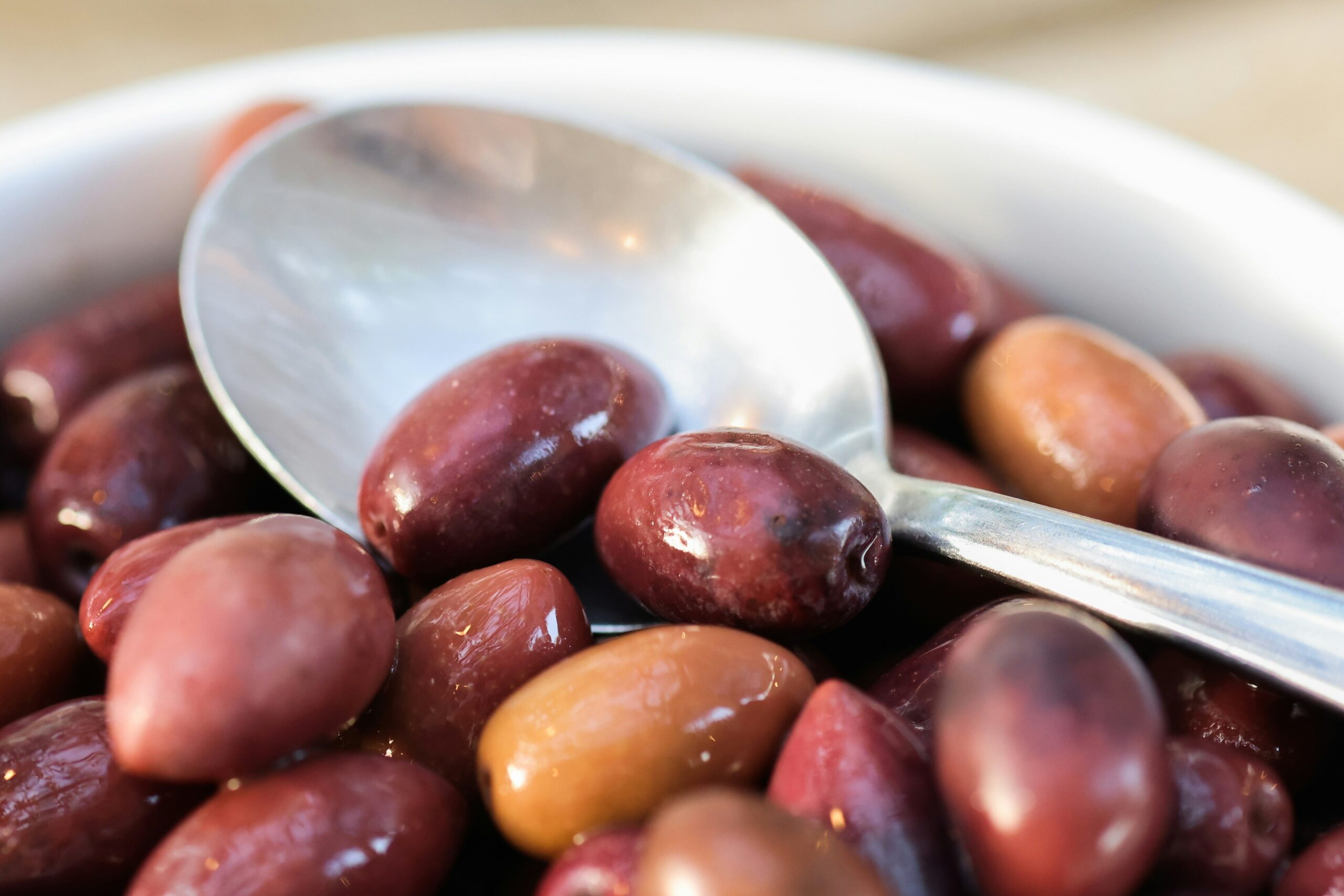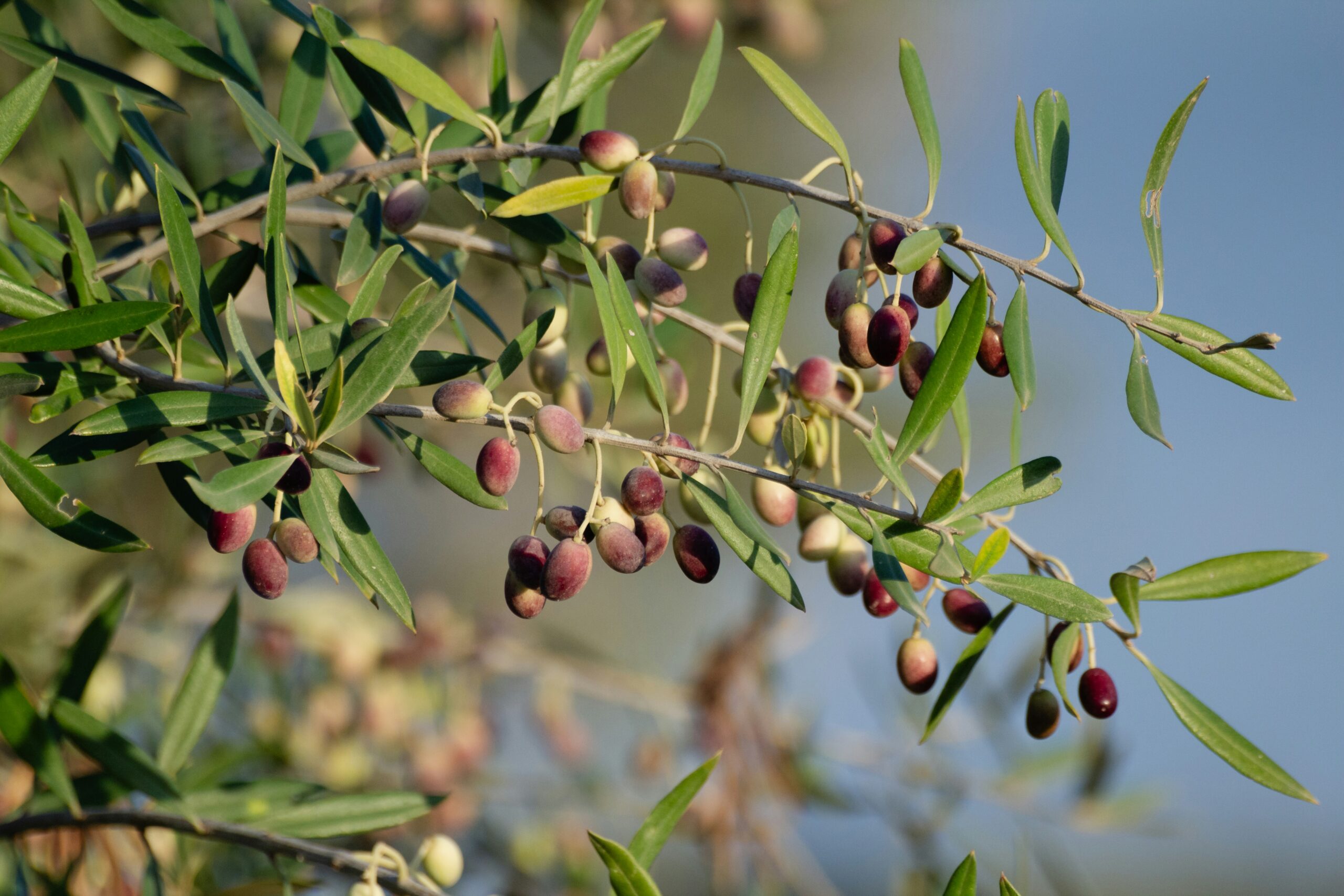Olives are the round fruits of the olive tree. When considering the sweet side of the culinary world, they are probably native to the Mediterranean region. The Olive tree is ancient and once a food source. Even today, production is mostly in Europe and the Mediterranean region.
Like a conventional mini fruit, an olive fruit has a pulp, a skin, and a pit. As the fruit ripens, the skin color shifts from light green (for early development by chloroplast development) to yellow, pink, and then black. The color changes that occur are very pronounced and most likely due to the unbalanced and variable relative abundance of major pigments in olives.
According to the scientist's knowledge, few clinical studies regarding the health effects of table olive consumption are present in the literature. However, other research on the parts of olives suggests they can offer potential health benefits.

Table olives are food derived from the processing of olive fruit. The different processing styles will remove the fruit's natural bitter flavor. Table olives are among the most common pickled products processed throughout the globe. They are healthy snacks consumed in moderation daily. Table olives are a nutritious food containing water, fat, and carbohydrates. Their nutritional composition varies with their ripening stage and the processing method employed, which are the two main determinants for olives.
Market opportunities have recently increased due to the increased consumer demand for foods in the diet that may enhance or promote health and reduce the risk of disease. So today, we will analyze a few scientific articles to see how table olives can influence our bodies. What are you going to unearth? Read on!
There is an extensive number of olive varieties. These fruits are sometimes classified according to their habitation. Several popular species are originally from Spain, Greece, or the rest of Europe. Chalkidiki![]() is a prominent Greek variety of olive. Olives come in so many shapes, sizes, and flavors. Nevertheless, the majority differentiate olives into two varieties, black and green. What is the distinction between these olives? It's clear enough that they differ in color. But what accounts for this difference?
is a prominent Greek variety of olive. Olives come in so many shapes, sizes, and flavors. Nevertheless, the majority differentiate olives into two varieties, black and green. What is the distinction between these olives? It's clear enough that they differ in color. But what accounts for this difference?
It is fun to know that green and black olives come from the same tree. That depends on how ripe the fruit is. Green olives have their color because they are picked at a younger age than black olives. Green fruits are merely unripe and full of chlorophyll. Either way, unprocessed olives are inedible. This makes it necessary to soak them in different kinds of sauce or brine. Freshly harvested olives straight off the tree are too bitter. The nutritional value and health properties of black and green olives are similar, with slight differences.

Olives are colorful fruits from beautiful trees with stout branches and slender green leaves. The Olea europaea L.![]() is an ancient tree species, the fruits of which are named olives, and its products are table olives and olive oil. In neighboring countries around the Mediterranean Sea, olives are an essential part of the diet. Olives have a signature flavor that few are fond of. By contrast, olive oil is milder than raw or pickled olives, which makes it generally safe for conventional cuisine. Today, we will explore the constituents and health-promoting properties of olive oil, olive fruit, and olive leaf extract.
is an ancient tree species, the fruits of which are named olives, and its products are table olives and olive oil. In neighboring countries around the Mediterranean Sea, olives are an essential part of the diet. Olives have a signature flavor that few are fond of. By contrast, olive oil is milder than raw or pickled olives, which makes it generally safe for conventional cuisine. Today, we will explore the constituents and health-promoting properties of olive oil, olive fruit, and olive leaf extract.
One of the most essential benefits of olives is that they fight harmful pathogens. The extraordinary antimicrobial effect is the ability of olives to prevent the growth and reproduction of microorganisms, inhibiting or killing them instead. H. Pylori![]() testing of olive oil from olives Components of the oil were shown to have growth inhibitory effects on bacteria at low concentrations and were able to achieve stability for several hours in the highly-acidic environments of the stomach. Thus, extra-virgin olive oil exerts in vitro bactericidal activity against Helicobacter pylori.
testing of olive oil from olives Components of the oil were shown to have growth inhibitory effects on bacteria at low concentrations and were able to achieve stability for several hours in the highly-acidic environments of the stomach. Thus, extra-virgin olive oil exerts in vitro bactericidal activity against Helicobacter pylori.
Other research also mentions the antiviral efficacy of olive leaf extract. Antiviral activity includes inactivating viruses or inhibiting virus replication. Some Herpes viruses![]() may be susceptible to olive leaf extracts. Due to their resistance to insect and microbial attacks, the leaves of the olive boost their high potency.
may be susceptible to olive leaf extracts. Due to their resistance to insect and microbial attacks, the leaves of the olive boost their high potency.
Olives and their products are integral parts of the Mediterranean diet. Although it may appear tasty and diverse, this diet can protect you from various cancers. Some studies also indicate that Mediterranean-style eaters have a lower incidence of other cancers, such as breast![]() and colon
and colon![]() . Proteins, DNA, and lipids are oxidized, and the resulting products have been directly correlated with cancer development; it has been proposed that dietary intake of antioxidants may lower cancer risk.
. Proteins, DNA, and lipids are oxidized, and the resulting products have been directly correlated with cancer development; it has been proposed that dietary intake of antioxidants may lower cancer risk.
Olive oil, fruits, and vegetables, all of which are part of the Mediterranean diet, contain antioxidant properties. Nontoxic agents, such as ingredients packed in the peel of the olives, are also some anticancer agents. So eat those lovely olives.

Because the elements present in the olives can have helpful effects on those with diabetes, they are safe to eat because they have low glycemic index. Olives can help healthy individuals stay protected against diabetes. These stone fruits are capable of lowering blood sugar. In addition, olive leaf extracts have been shown to reduce blood sugar. Thus, different types of olive products can be considered in a diabetes diet. The compounds that occur in olive oil also aid in glucose metabolism and enhance the quality of insulin sensitivity and function.
As you may have already read, Studies have indicated a strong relationship between decreased heart disease prevalence and the Mediterranean diet. And what the hell is a common component of this diet? Olives! Natural antioxidants from olive trees may aid in reducing the risk of cardiovascular disease. In laboratory studies, research has revealed that olive leaf extract has a vasodilatory action on blood vessels.
The vitamins in olives can even help prevent the oxidation of cholesterol. These steps are essential in maintaining cardiovascular health. And, of course, it is very practical for olive oil, too. Prevention outlines are widely known, and many researchers believe that including olive oil in the diet would be a strong protector of heart diseases.
The consumption of olives and olive oil contributes to the prevention of bone loss. Is this new news for you? Antioxidant activity mitigates aging processes that damage bone. Inflammation and oxidative damage caused by aging are involved in developing bone loss, osteoporosis, and increased fracture risk. A few studies suggest that olive oil feeding may protect against osteopenia![]() due to inflammation. Also, in another study about osteoporosis
due to inflammation. Also, in another study about osteoporosis![]() , black olives can avoid the loss of bone mass. So, it's worth buying olive products for the sake of your bones!
, black olives can avoid the loss of bone mass. So, it's worth buying olive products for the sake of your bones!

Bioactive compounds are largely available for us through olive by-products. Not just in the context of food, do this in cosmetics, too. This makes olives a valuable resource for the cosmetics industry. Several chemical compounds can be used in cosmetics in olives, olive leaves and twigs, olive seeds, and oil. For centuries upon centuries, olive oil has been used on the skin.
Olive oil is a natural and versatile cosmetic used to treat all skin types because of its properties. Numerous studies have been published on olive by-product extracts and the cosmetic effects of their components. According to scientists, olive contents may also ensure skin protection against photoaging-related UV radiation.
The health benefits of olives and products olives are known. However, when considering the production of table olives, the processing of the fruit causes a modification of their composition, particularly the minor components. Chemical solutions are the most effective method to reduce the bitterness of the olives, resulting in the highest loss of nutrients.
Moreover, besides the reabsorption of nutrients, the formation of new compounds arises during fermentation and storage, resulting in changes in the composition of olives. The sweetening of olive fruit is also associated with the fermentation stage. In addition, table olives' destoning, stuffing, and seasoning should be pursued with caution, as these further processing operations also negatively influence the profile of finished products. So, the higher the olive processing, the lower the health-associated components.
If you are fond of olives, you probably wonder if they are caloric. Table olives provide between 180 and 250 kcal per 100 g, depending on their processing. Due to their processing, carbohydrates are almost nonexistent in table olives since they are eliminated during fermentation or immersed in brine.
This relatively high calorific value comes from the high content of fats in olives. Thus, lipids constitute the major component of table olives with a broad range, while protein is low in these fruits. The protein in table olives is relatively low quality because they lack some essential amino acids; however, they contain most of the essential amino acids and form a good quality protein source for the small amount they contribute to overall intake.

Because olives are a fatty food source, they have some fatty acids. A comparative lipo phenol characterization of table olives reveals an up-to-unsaturated fat-oriented and down-to-saturated-fat-oriented basic lipid biochemistry. Specifically, the richest fatty acid in table olives is oleic acid![]() .
.
The good news for the fiber freaks out is that olives also possess fiber. This substance is essential in your diet for a healthy life. Table olives are an important source of fiber, particularly pectin. Processed or not, olives can benefit your body, helping your intestines function thanks to their natural fiber content. This is also another benefit of olives.
Another important nutritional value of olives is vitamin E. It is considered the main vitamin in table olives. This element mainly acts to protect against oxidative damage in the body. Additionally, the potassium concentration in table olives is low, making them a negligible contributor to the recommended potassium intake. In contrast, the high sodium content in the production of table olives is dictated by the fermentation brines used. Salt![]() values in 100 g of table olives are near the maximum permitted dose, and table olives should not be consumed in high volumes.
values in 100 g of table olives are near the maximum permitted dose, and table olives should not be consumed in high volumes.
The olives, too, are certainly compounds of specific chemicals. Phenolic compounds![]() are the key phytochemicals in stone fruit. Researchers have been interested in phenolic compounds in recent years due to the beneficial properties assigned to human health. That said, olive oil has much more of these amazing compounds. It is the finest of the finest from olives.
are the key phytochemicals in stone fruit. Researchers have been interested in phenolic compounds in recent years due to the beneficial properties assigned to human health. That said, olive oil has much more of these amazing compounds. It is the finest of the finest from olives.
Table olives are a major part of the diet of several countries in the Mediterranean region. Extraction methods are commonly utilized to ensure fermented olives' steady and safe use. The products are only sometimes heat-treated. This means that the microbiota is only sometimes eliminated, and suitable acidity and salinity must be obtained before commercialization. While the physicochemical conditions are unfavorable for foodborne pathogens, a few disease outbreaks have been cited in the literature.

Samples in which foodborne pathogens or their metabolites have been detected have often resulted from street markets, improper handling, and storage conditions. But don't worry. Though high salt concentration, low pH (often high acetic acid concentration), and adding preservatives are barriers to undesirable microorganisms, these all challenge an acceptable, safe, and good-quality food product.
Other olive safety parameters include adequate dose. The main reason excessive consumption of olives is not preferred is their salt content. Olives that have gone through the process have a high sodium value. So salt is something that our bodies need to function properly — it gets a bad rep, but it should not be avoided altogether. However, sodium, in excess, present in the organism is an unhealthy situation that almost always accompanies the origin of diseases.
It would be best if you didn't eat raw olives because they contain a bitter compound known as oleuropein. Processing is done to remove the bitterness from the product. Thus, processing olives enhances and guarantees consumer acceptance and safety of the product. Furthermore, the product is fermented, affecting its safety profile and allowing the olives to exhibit probiotic properties![]() . All this makes olives a vector of probiotics.
. All this makes olives a vector of probiotics.
The one big question that remains is. Who are the people who are not able to eat olives? Instead, they are parts of safe products, well tolerated by the human digestive apparatus. An allergy to olives is fairly uncommon, but it can happen. So, we advise general caution.